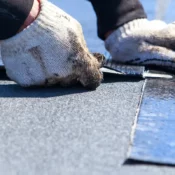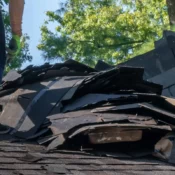
Top 5 Roofing Tricks for Longevity
When it comes to maintaining your home, the roof is a crucial component. It shields you from the elements and contributes significantly to your home's overall aesthetics and value. To ensure your roof stands the test of time, it's important to employ the right materials and maintenance practices. Here are the top 5 roofing tricks for longevity:
1. Choose Durable Roofing Materials
The foundation of a long-lasting roof starts with the right materials. Here are some of the most durable options:
- Asphalt Shingles: Known for their cost-effectiveness and ease of installation, asphalt shingles are a popular choice. High-quality asphalt shingles can last up to 30 years.
- Metal Roofing: Metal roofs, whether made from steel, aluminum, or copper, are renowned for their longevity, with lifespans that can extend beyond 50 years. They are also highly resistant to extreme weather conditions.
- Clay and Concrete Tiles: These materials are incredibly durable and can last for up to 100 years. They are fire-resistant and provide excellent thermal properties, keeping your home cool in the summer.
- Slate Roofing: Slate roofs are among the most durable, with a lifespan that can exceed 100 years. They are both beautiful and incredibly resistant to weathering.
- Wood Shingles and Shakes: When properly maintained, wood shingles and shakes can last around 30 to 40 years. They offer a natural, rustic appearance.
2. Ensure Proper Installation
Even the most durable roofing material won't last long if it's not installed correctly. Proper installation by experienced professionals is key to a roof's longevity. Poor installation can lead to issues like leaks, premature wear, and structural damage. Always hire a reputable roofing contractor with a proven track record.
3. Regular Inspections and Maintenance
Routine inspections and maintenance are essential for prolonging the life of your roof. Here’s what you should do:
- Inspect Regularly: Check your roof at least twice a year, especially after severe weather. Look for missing, damaged, or curled shingles, as well as signs of wear and tear.
- Clean Gutters: Clogged gutters can lead to water backup and damage to your roof and home’s foundation. Clean gutters regularly to ensure proper water drainage.
- Remove Debris: Remove leaves, branches, and other debris from your roof to prevent moisture buildup, which can lead to mold and rot.
4. Ventilation and Insulation
Proper ventilation and insulation are critical for maintaining a healthy roof. They help regulate temperature and moisture levels, preventing damage from condensation and heat buildup. Here’s how:
- Ventilation: Ensure your attic has proper ventilation to allow hot air to escape. This reduces the likelihood of ice dams in winter and overheating in summer.
- Insulation: Adequate insulation in your attic helps maintain consistent indoor temperatures and reduces the strain on your roof caused by temperature fluctuations.
5. Address Repairs Promptly
When a problem is identified, whether it’s a leak, damaged shingles, or any other issue, address it immediately. Delaying repairs can lead to more extensive damage and higher repair costs in the long run.
- Patch Leaks: Small leaks can quickly escalate into major issues. Patch them as soon as you notice them to prevent water damage and mold growth.
- Replace Damaged Shingles: Replace any missing or damaged shingles promptly to maintain the integrity of your roof.
By following these roofing tricks, you can significantly extend the lifespan of your roof and protect your home from the elements. Investing in quality materials, proper installation, regular maintenance, and timely repairs will pay off in the long run, ensuring your roof remains in top-notch condition for years to come.
All Categories
MON-SAT 8:00-17:00
+1(408)0695-0072




